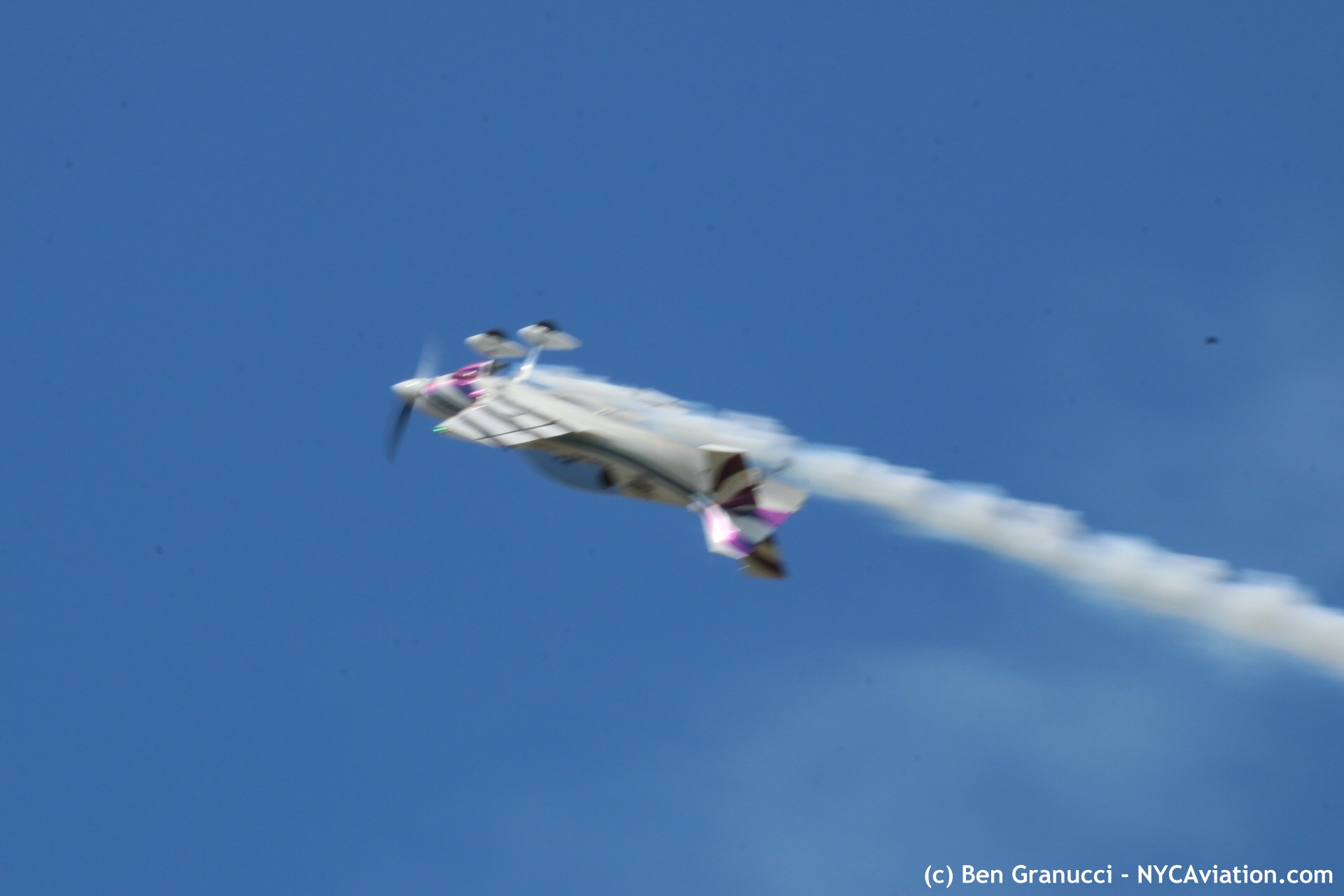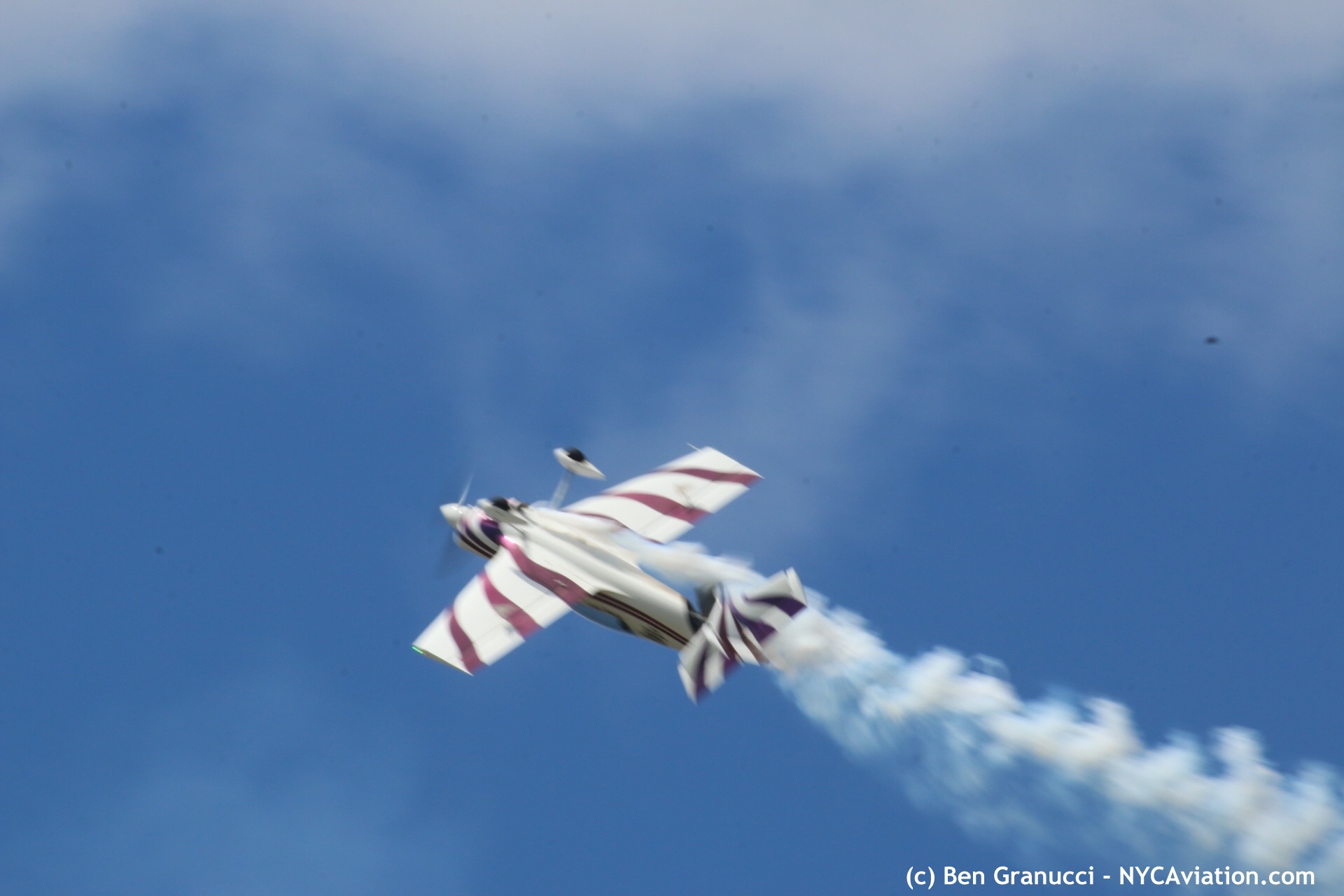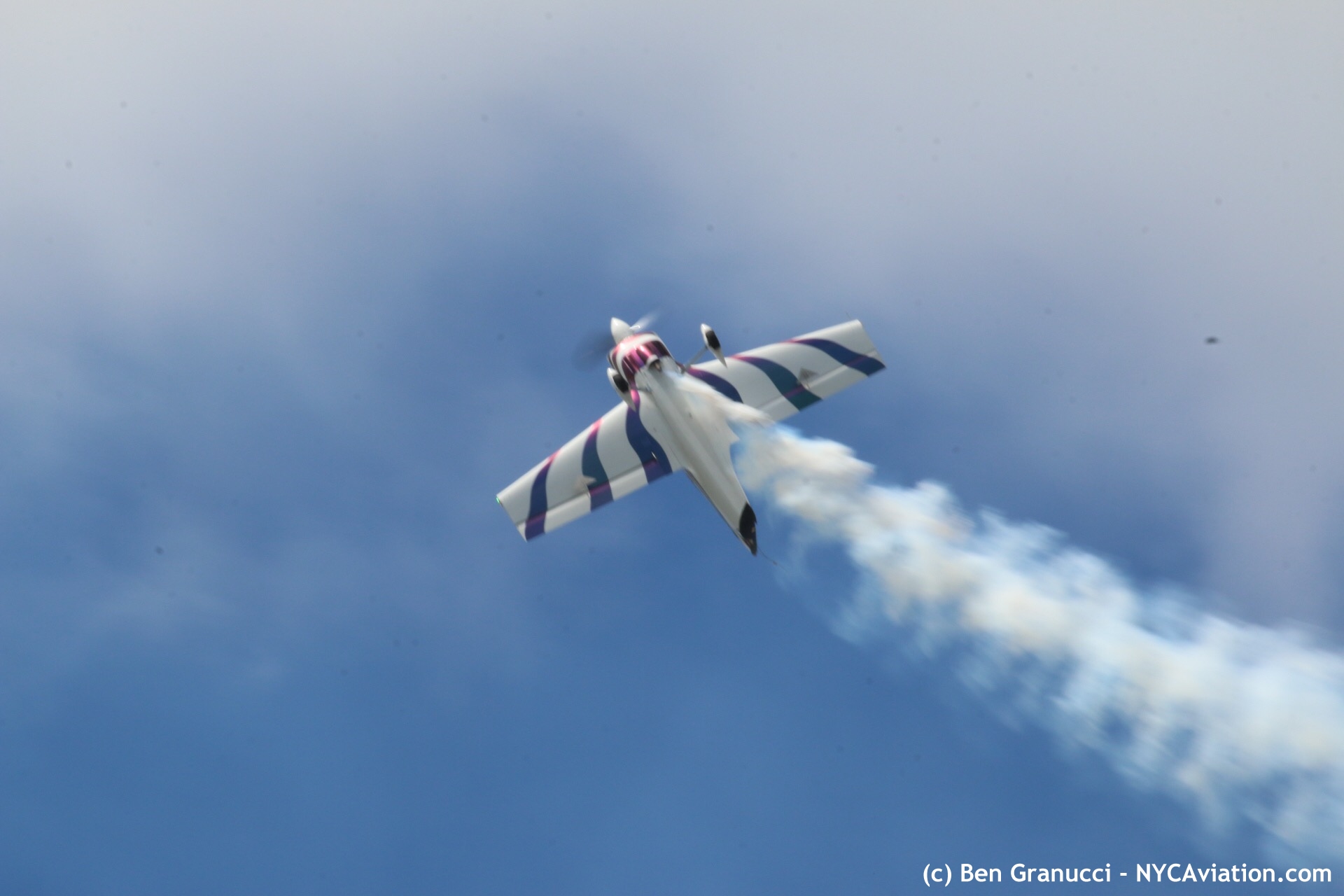
ASN Wikibase Occurrence # 179079
This information is added by users of ASN. Neither ASN nor the Flight Safety Foundation are responsible for the completeness or correctness of this information.
If you feel this information is incomplete or incorrect, you can submit corrected information.
| Date: | Friday 28 August 2015 |
| Time: | 14:07 |
| Type: |  Giles G-202 |
| Owner/operator: | Private |
| Registration: | N18FJ |
| MSN: | 018 |
| Year of manufacture: | 1998 |
| Total airframe hrs: | 400 hours |
| Engine model: | LY-CON AEIO-360-EXP |
| Fatalities: | Fatalities: 1 / Occupants: 1 |
| Aircraft damage: | Destroyed |
| Category: | Accident |
| Location: | Near Stewart International Airport (KSWF), Newburgh, NY -
 United States of America United States of America
|
| Phase: | Manoeuvring (airshow, firefighting, ag.ops.) |
| Nature: | Demo/Airshow/Display |
| Departure airport: | Newburgh, NY (SWF) |
| Newburgh, NY (SWF) | |
| Investigating agency: | NTSB |
| Confidence Rating: |
The commercial pilot was practicing his airshow routine in the experimental amateur-built airplane for a performance scheduled the following day. He had completed several maneuvers and was about 5 minutes into the routine when the tail section of the airplane separated from the fuselage during a 45° upline maneuver as the airplane began a left aileron roll. The pilot had performed several aileron rolls, both left and right, at varying pitch attitudes earlier in the routine.
Examination of the wreckage revealed that the fractures that resulted in separation of the tail section likely initiated at the bond between the lower surface of the horizontal stabilizer and the flange attaching the horizontal stabilizer to the left side of the fuselage. The bond failed in tension, consistent with the left side of the horizontal stabilizer moving upward relative to the fuselage (or the fuselage moving downward relative to the horizontal stabilizer). Microscopic examination of the bond surfaces revealed two relatively small regions of poor bond integrity, as evidenced by a lack of fiber pullout or resin transfer between the mating surfaces of the flange and the underside of the horizontal stabilizer. One of these regions was in the area where the bond fracture likely originated. Poor bond quality can result from poor or improper surface preparation before the bond is made, such as improper sanding and incomplete cleaning of the surfaces to be bonded. These two regions contained score marks consistent with having been sanded, as was specified in the build directions. It is possible that these two regions were not thoroughly cleaned or became contaminated after cleaning before the bond was made. Contamination from dust, oil, or other substances could have prevented the resin from adhering to the surface in those regions.
Fourteen years before the accident, in France, another airplane of the same make and model had an in-flight separation of the tail during wings-level flight after performing aerobatic maneuvers. The investigation discovered a similar lack of fiber pull-out or resin transfer in the bond fracture of the same joint. In that case, there were several areas with these features that covered a much larger portion of the bond surface.
Both airplanes exhibited evidence of poor bonding between the horizontal stabilizer and the flange attaching it to the fuselage, a condition that most likely occurred during their manufacture, and both had accrued several hundred flight hours before the bonds failed. The accident airplane was manufactured about 17 years prior to the accident. Although it had been flown in multiple aerobatic competitions and airshows, no evidence of progressive crack growth was observed emanating from the origin area on the fracture surface. This suggests the possibility that the bonds may have fractured after being exposed to higher loads at the time of ultimate failure, rather than the load factors to which they had previously been exposed. However, in both accidents, the tail separation occurred during a maneuver that was relatively benign compared to other maneuvers flown earlier in their flights. The tail section failure on the accident airplane occurred during an aileron roll while on an upline, which would have applied loads to the horizontal stabilizer that were asymmetric (upward on the left stabilizer, consistent with the direction of the initiating "L" flange bond failure, and downward on the right stabilizer), but likely not the highest loads achieved during the accident flight. The airplane vertical load factor during the preceding pull-up maneuver was relatively high, estimated to be between 6 and 9 g. However, the loads on the horizontal stabilizer at that time should have been downward on both sides, which is inconsistent with the tensile fracture of the left "L" flange bond. The recording g-meter found at the accident site indicated the peak load factors reached during the flight were 8 and -4.75 g. Assuming the peak needles were set to 0 before the flight and did not move appreciably during impact, it is likely that the airplane did not exceed the airplane design limits of ± 10 g for vertical load factor during the accident flight. However, the relationship between peak vertical load factor and the strength of the compromised bonds of the "L" flanges is unknown. The airplane had also performed several other maneuvers during the flight, including snap rolls and aileron rolls in both directions. It is possible that the bond had failed or partially failed during one or more previous maneuvers during the accident or during previous flights. While no evidence of progressive crack growth was found in the bond fracture features, failure of multiple elements of the structure were required to produce the observed separation. It is possible that the bond fracture developed over the course of several or many maneuvers without leaving obvious evidence of progressive damage on the fracture surface. Although the "L" flanges in the accident airplane were constructed using three plies of fiber-reinforced cloth, as opposed to the specified four, the lack of the fourth layer likely did not contribute to this accident, as the originating failure was in the bond between the flange and the horizontal stabilizer surface.
In addition, the investigations of both accidents revealed that the "L" flanges and their bonds to their mating surfaces are critical to the strength of the skin joints between the fuselage and the horizontal stabilizer and the vertical stabilizer. The investigation revealed that no snap roll entry speed limitation was designated for this airplane, nor is it for many other aerobatic airplanes, due to a lack of criteria. Snap rolls place considerably high and asymmetrical loads on the horizontal stabilizer. As a result of this investigation, the airplane designer developed an inspection procedure for the empennage, a reminder about common airspeed limitations that should be established, and a suggestion for establishing a snap roll entry speed limitation.
Although the pilot's toxicology results tested positive for Zolpidem, the values were below the normal therapeutic range and there was no evidence that impairment played any role in causing or contributing to the tail separation.
Probable Cause: Separation of the vertical and horizontal stabilizers from the fuselage due to a fracture that initiated at the bond between the left horizontal stabilizer and the flange that attached the horizontal stabilizer to the fuselage skin. The failure was likely caused by construction techniques that produced poor bond strength in a critical area and the high loads on the horizontal stabilizer from a single or multiple aerobatic maneuver(s).
Accident investigation:
 |
|
Sources:
NTSB
FAA register: http://registry.faa.gov/aircraftinquiry/NNum_Results.aspx?NNumbertxt=18FJ
Location
Images:



Revision history:
| Date/time | Contributor | Updates |
|---|---|---|
| 28-Aug-2015 19:06 | Geno | Added |
| 28-Aug-2015 19:16 | Geno | Updated [Aircraft type, Source, Damage, Narrative] |
| 28-Aug-2015 19:32 | Geno | Updated [Registration, Cn, Operator, Source, Narrative] |
| 29-Aug-2015 00:25 | Geno | Updated [Registration, Narrative] |
| 29-Aug-2015 17:26 | harro | Updated [Photo, ] |
| 29-Aug-2015 17:26 | harro | Updated [Photo, ] |
| 29-Aug-2015 17:26 | harro | Updated [Photo, ] |
| 21-Dec-2016 19:30 | ASN Update Bot | Updated [Time, Damage, Category, Investigating agency] |
| 22-Sep-2017 17:55 | ASN Update Bot | Updated [Nature, Departure airport, Destination airport, Source, Narrative] |
| 22-Sep-2017 18:00 | harro | Updated [Nature, Source, Narrative] |
Corrections or additions? ... Edit this accident description
The Aviation Safety Network is an exclusive service provided by:


 ©2024 Flight Safety Foundation
©2024 Flight Safety Foundation